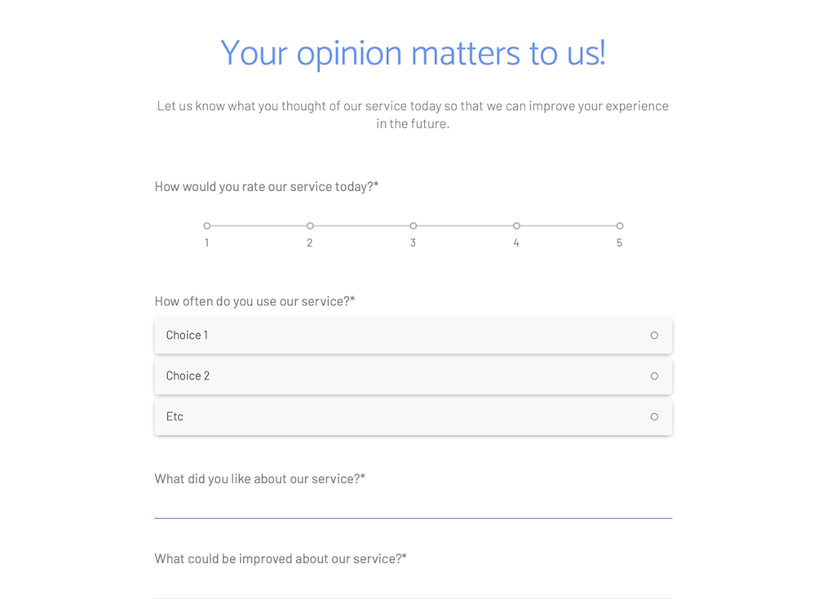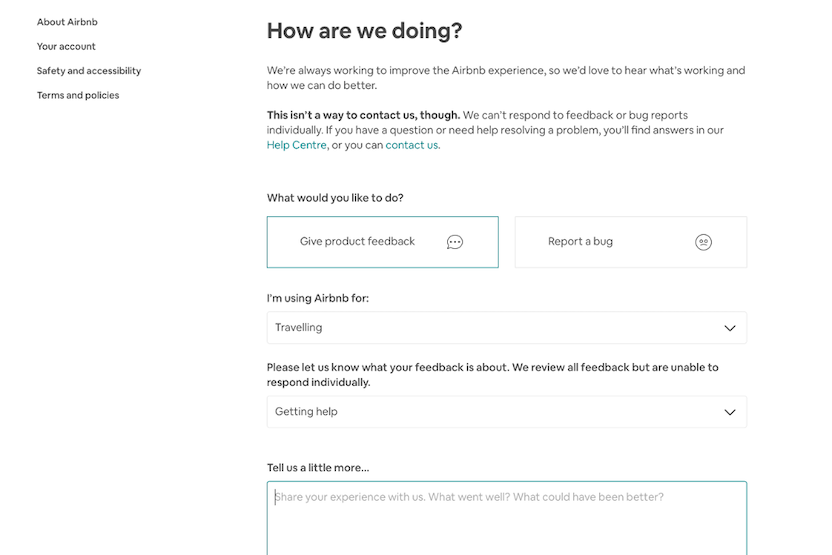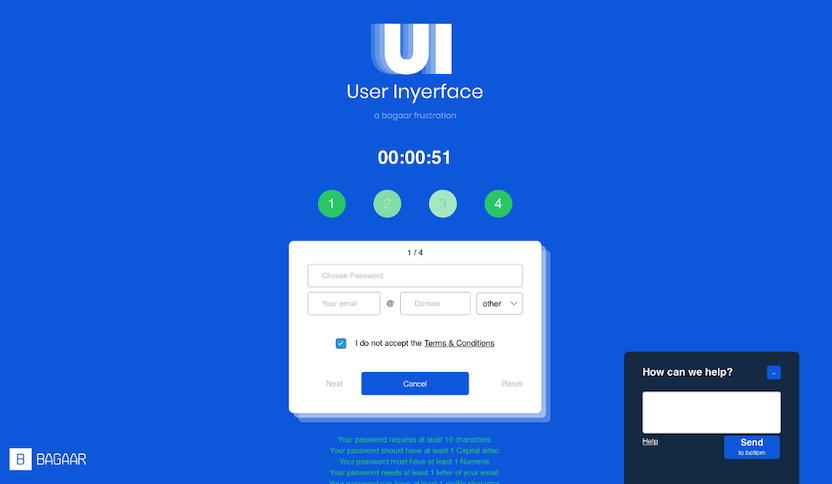
4 methods for designing truly engaging customer surveys

You might have recently implemented a new product feature for your business, or maybe you’re searching for reasons behind a problem you’re facing. Whichever the case, the best way to understand your customer needs is by getting the perspectives of real customers. It seems obvious, but through a series of expertly-phrased and positioned questions, customer surveys allow you to empathize with your product users to gain insights that aren’t as visible to developers, managers, and marketers.
Designing engaging customer surveys involves four general rules to be successful:
- Ask the right questions
- Incentivise the customer
- Make it easy to complete
- Minimize barriers through exceptional UX
Before we examine some tips to designing customer surveys, it’s important to understand why customer feedback is so important. Before we invest our time and effort into building a survey, why have customer surveys in the first place?
Why is customer feedback important?
Customer feedback functions almost as a conversation: you can understand the other perspective only if you’re prepared to listen.
For example, when you’re testing a new product, customer feedback can help you identify what works and what doesn’t, as well as what people’s experiences and expectations are. Asking for customer feedback after you’ve finished developing your product is less than ideal, as you’ve already invested resources to complete the product.
However, by asking for feedback continuously throughout your product development cycle, you can adapt quickly with your remaining resources and make a product or service that you’re confident your customers will love.
Yelp is a great example of how closely paying attention to customers can pay off. Before it became a user-review website, it was a place to share email responses from your friends and family asking for recommendations. The idea didn’t take off until Yelp realised that many of their users were using their rather hidden features—a page to leave unprompted reviews. After they expanded on this idea, it became a huge hit and the business it is today.

Listening to your customer can help you find new problems to solve or devise new ideas, and customer feedback is an active, receptive, and honest way to do this. Without limiting yourself to surveys, customer feedback channels include in-depth interviews, focus groups, and remote usability testing.
Surveys can be easy to build, however, and can provide continuous value once it’s set up. It's important to be aware of survey best practices before you begin. Let’s delve into how you can create customer surveys that shed a light on your business and give something back to the customer as well.
Tips on creating engaging customer surveys
1. Ask the right questions
To get the right kind of answers, you need to ask the right questions. This means understanding what sort of information you expect to glean from your survey and crafting questions that will help you achieve this objective.
You might be facing a decline in sales without really knowing why. Let’s say you decide to send out a customer feedback survey after each sale via email. Ask yourself what questions will help you diagnose the issue, and try to eliminate biases in order to get to the truth.
For example, the question “Would you rather include this feature in the product/service or remove it?” might sound reasonable but it is in fact a loaded question. Depending on the feature, you are assuming that people are certain it should either be included or removed. Most importantly, you exclude nuances such as particular aspects of the product feature customers might like, or reasons why they did or didn’t like it.
To give customers the freedom to describe their experiences, you can use open-ended questions—questions that leave room for users to respond in their own way rather than choosing one of the given options. This can be a short-text format asking users to leave any concerns about the service.
Here’s an example of a customer survey that you can create in minutes using templates. There are numerous question formats you can utilise including multiple-choice, text, dropdown, scale, a simple yes/no, and more.

2. Incentivise the customer
When people undertake a task, they expect to gain something to make up for their efforts. Similarly, customers should be given proper, well-communicated incentives to complete a survey.
When you add an incentive, the customer feels as if their contribution is worth the output—which means they’ll be much more motivated to not only complete your survey, but answer the questions as best and accurately as they can.
These incentives could include a giveaway, rewards bonus, or a chance to win a prize, but it doesn’t have to be monetary—offering free content can be an incentive, too. At the very least, you should state why your survey is worth a customer’s time. For example, you can inform them exactly how their feedback will be used, whether it’s to change a product or help understand a certain customer’s complaint.
The next step forward is to actually respond to the feedback given, either by implementing suggestions or even acknowledging a common issue. YouTubers, for example, do this often by directly replying to comments from their viewers or addressing them in future videos, which is what prompts such a high level of engagement for their personal brands.
3. Make it easy to complete
Customers taking your survey are off to a good start. If they’ve made it to this point, it means they already believe your survey to be worth their time. You should avoid doing anything to jeopardize this success, such as having too many or complicated questions that are difficult to answer.
You can avoid this one of two ways: eliminate questions that you don’t need, or, if this isn’t possible, manage expectations beforehand. This can be as simple as stating the duration of the survey at the beginning or giving them extra motivation or incentive to increase the likelihood that they’ll complete it.
Airbnb has a successful customer feedback survey that is easy to complete while still managing expectations. The questions fade in as you answer them in a logical and natural sequence. This motivates the user to finish the survey and cleverly avoids survey fatigue. Furthermore, they manage expectations by warning viewers about potential non-replies in advance to avoid user frustration later down the track.

4. Focus on readability and accessibility through UX
Speaking of survey barriers, bad UX design can get in the way of people completing your survey. If your feedback survey is hard to read due to certain design elements or not accessible on diverse platforms and devices, you may unintentionally eliminate certain groups from participating.
Readability has several components, including the legibility of words through design elements and actual comprehension of the questions and text.
You should also aim to avoid questions that are hard to comprehend. For example, if you’re gathering data from a non-technical target audience, you’ll want to avoid technical jargon. On the other hand, if your audience is technical, you don’t want to oversimplify language that they would most likely understand.
To increase legibility, avoid using colors that are too bright or don’t sufficiently contrast the background and the text, Another good tip is to use fonts that are simple and commonly appear online. Comprehension can be increased by avoiding confusing layouts where the meaning is hard to decipher, or question formats that get in the way of the user.
Take a look at User Inyerface, a website that purposefully exposes bad UX/UI practices to make a point. The site especially uses inappropriate formats that do not suit questions, such as a slider to indicate age which doesn’t update while you drag it horizontally on the screen.

What’s next?
In this article, we’ve covered our top tips for designing engaging customer surveys as well as why you should care about customer feedback. When you know how to use surveys, they can provide valuable insight into the problems of your product or service, and further your business’ growth.
There are a lot of things to consider for the long-term value of your survey, but for now, creating your own survey using these tips should help you find what you are looking for.





